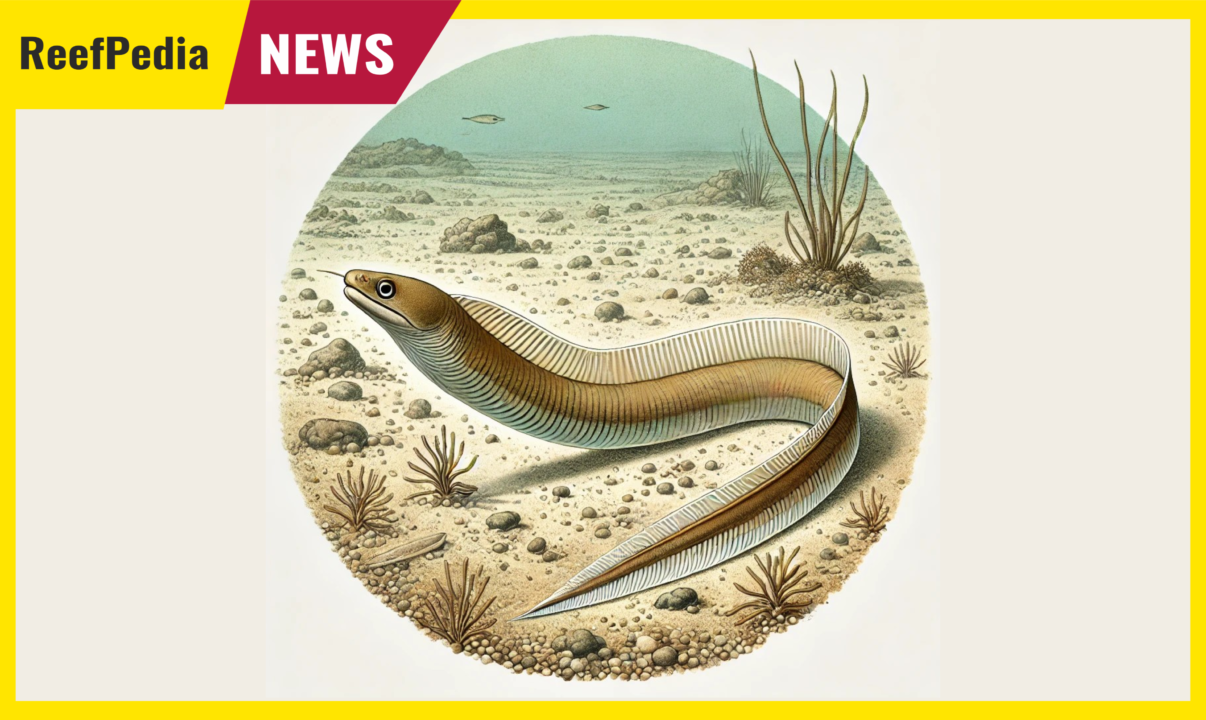Scientists from the Zoological Survey of India (ZSI) have discovered a new eel species, Ophichthus kailashchandrai, in the Bay of Bengal off the coast of India. This species has been named in honor of Dr. Kailash Chandra, the director of ZSI, recognizing his significant contributions to animal taxonomy in India. This discovery enriches our understanding of ocean biodiversity and opens up new possibilities for marine aquaristics.
Ophichthus kailashchandrai is a medium-sized eel, measuring between 42 and 46 cm in length. Its body is elongated and slender, typical of eels. The body color is light brown, which helps camouflage it in sandy ocean bottoms. It has white fins that add contrast and elegance to its appearance. This eel has large eyes, suggesting it may be active under low light conditions typical of the depths it inhabits.
Source: https://www.drishtiias.com/daily-updates/daily-news-analysis/ophichthus-kailashchandrai-snake-eel
This species is characterized by its lack of scales, and its skin is smooth and slimy, which facilitates movement across the ocean floor. Ophichthus kailashchandrai has well-developed teeth, indicating a predatory lifestyle. It primarily feeds on small fish, crabs, and other invertebrates found in the sand and among rocks on the ocean floor.
The discovery of Ophichthus kailashchandrai is significant for the world of marine aquaristics. These eels, with their unique appearance and calm demeanor towards organisms they do not consider potential food (larger fish species), can become an attractive addition to marine aquariums. In an aquarium setting, it is advisable to avoid keeping very small fish that the eel might consider as food. The diet of this eel makes it relatively easy to feed, which is beneficial for aquarists.
Despite the attractiveness of this species, introducing it to marine aquariums can pose certain challenges. Maintaining Ophichthus kailashchandrai in a marine aquarium requires careful adjustment to its natural deep-sea environment. It is crucial to maintain a lower water temperature, which may require the use of a specialized aquarium chiller. Moreover, ensuring the right chemical composition of the water, including pH control and the levels of nitrates and phosphates, is essential. The sensitivity of this species to light suggests the need for subdued lighting. Ophichthus kailashchandrai prefers soft substrates that allow it to burrow, so proper substrate preparation is necessary. It is also important to keep the eel healthy by providing a protein-rich diet, which might require regular feeding of live or frozen food.
It is important that the introduction of Ophichthus kailashchandrai to aquaristics is carried out thoughtfully, respecting natural populations and ecosystems. Protecting natural habitats and controlled fishing are key to ensuring that this newly discovered species is not threatened by overfishing. Collaboration with environmental protection organizations and scientific research could help develop strategies for breeding eels in captivity, minimizing impact on wild populations.
Ophichthus kailashchandrai is an interesting new eel species with the potential to become a popular inhabitant of marine aquariums. Its unique appearance and relatively simple diet make it attractive to aquarists.
About the author

Grzegorz Bubak
My fascination with marine aquariums began over two decades ago when I stumbled upon an article about this topic in a magazine. Since then, the underwater world has become my obsession and passion, shaping my everyday life. I started my adventure with marine aquariums with soft corals, which were my first step into this fascinating world. Over time, captivated by the diversity and beauty of SPS corals, I decided to focus on their cultivation, which continues to fill me with constant wonder.
Thanks to my experience and passion for marine aquariums, I am ready to share my knowledge and expertise with other enthusiasts in this field. I am happy to be part of the Reef Pedia community, which serves as an invaluable source of information for all marine aquarium lovers.

